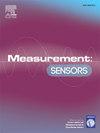Research regarding the double-weighing in air volume determination method
Q4 Engineering
引用次数: 0
Abstract
This study utilised a combination of error correction models and an influence mechanism function analysis to study the influence mechanism of air density on volume determination by the double-weighing in air method. The results revealed the law of the combined error of air density and surface desorption with atmospheric pressure. For the perspective of a single fluid, the principle of volume determination by the double-weighing in air method within a small density variation range was clarified. An error correction model for volume determination by the double-weighing in air method was also built; this model was based on the physical properties of thermal expansion. Based on the mathematical model and the working principle of the measuring device, three primary factors that affected the results were identified and analysed: the atmospheric pressure range, the weight surface desorption effect, and the mass comparator properties. Taking 20 g, 500 g, and 1 kg OIML stainless-steel weights as examples, the volumes determined by this method were compared with those determined by the hydrostatic method. The normalised error was less than one, which proves that the results of this method were consistent with those of the hydrostatic method.
二次称量法测定风量方法的研究
本研究采用误差修正模型和影响机理函数分析相结合的方法,研究空气密度对空气双称重法测定体积的影响机理。结果揭示了空气密度和表面脱附随大气压力的联合误差规律。从单一流体的角度,阐明了在小密度变化范围内用空气中二次称重法测定体积的原理。建立了空气双称重法测定体积的误差修正模型;该模型基于热膨胀的物理性质。根据数学模型和测量装置的工作原理,确定并分析了影响测量结果的三个主要因素:大气压力范围、重量表面解吸效果和质量比较器性能。以20 g、500 g和1 kg OIML不锈钢重量为例,将该方法测定的体积与流体静力法测定的体积进行比较。归一化误差小于1,证明了该方法的计算结果与流体静力法的计算结果是一致的。
本文章由计算机程序翻译,如有差异,请以英文原文为准。
求助全文
约1分钟内获得全文
求助全文
来源期刊

Measurement Sensors
Engineering-Industrial and Manufacturing Engineering
CiteScore
3.10
自引率
0.00%
发文量
184
审稿时长
56 days
 求助内容:
求助内容: 应助结果提醒方式:
应助结果提醒方式:


